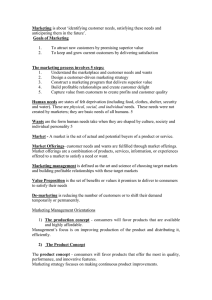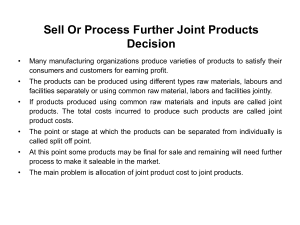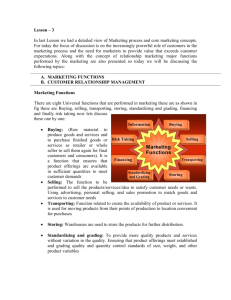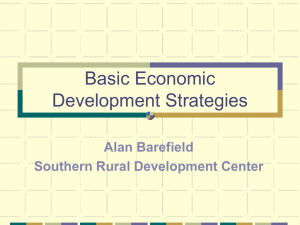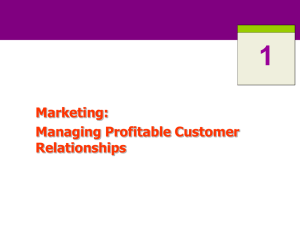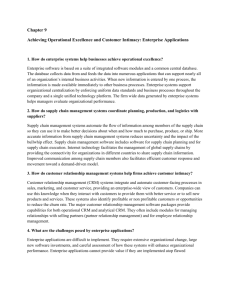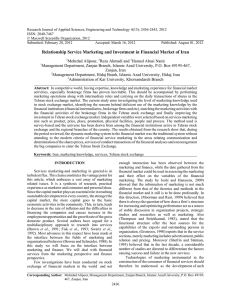Customer Relationship Management System Customer relationship
advertisement
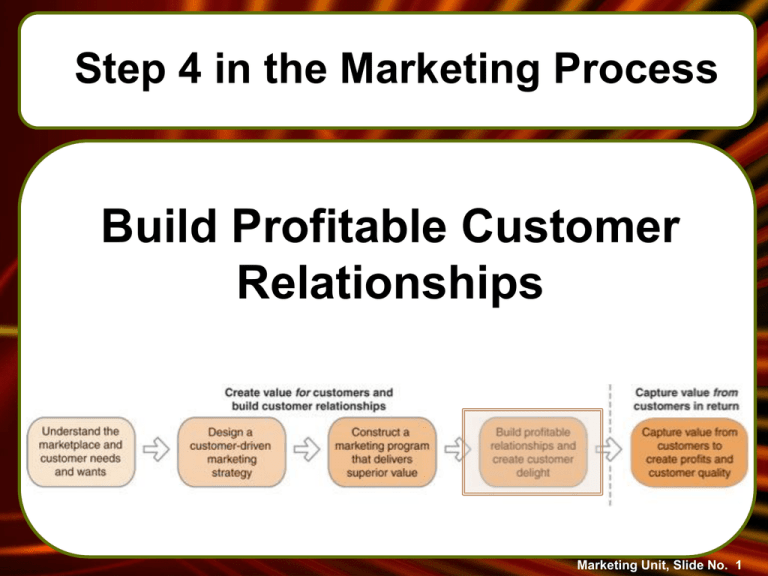
Step 4 in the Marketing Process Build Profitable Customer Relationships Marketing Unit, Slide No. 1 Building Customer Relationships • Customer relationship management (CRM) is the process of building and maintaining profitable customer relationships by delivering superior customer value and satisfaction. • CRM deals with all aspects of acquiring, keeping, and growing customers. • The key to building lasting customer relationship is to: create superior customer value and customer satisfaction. Satisfied customers are more likely to be loyal customers and give the company a larger share of their purchases. Marketing Unit, Slide No. 2 Customer Relationship Management System • Customer relationship management system - An information technology-based (IT-based) knowledge management system designed to track a company’s customers – what they are buying, how satisfied they are, and how their demands are changing. - Consists of three components or modules as shown on the right. Figure 11.8 Marketing Unit, Slide No. 3 Changing Nature of Managing Customer Relationships • Today’s companies are focusing on building more direct and lasting relationships with more carefully selected customers, • Few firms today still practice true mass marketing, i.e., selling in a standardized way to any customer who comes along. Firms now are targeting fewer, more profitable customers. • This is called selective relationship management. Involves using customer profitability analysis to weed out losing (unprofitable) and target winning ones for special treatment. • Other changes: - Serving chosen customers in a deeper, more lasting way. Going beyond strategies to attract new customer and generate transactions, focusing instead on retaining current customers and building profitable, long-term relationships with them. - Also striving to connect more directly with their customers. Direct marketing, i.e., buying without going into a store, is booming. Marketing Unit, Slide No. 4 Building The Right Relationships With the Right Customers Classifying Customers Based on Current and Future Value High Maintain Protect Cross-sell and up-sell Allow to leave Grow Cross-sell Current Value Low Low Future Value High Marketing Unit, Slide No. 5 Customer Relationship Levels & Tools • Relationships can be built at many levels depending on the nature of the target market. For example: - Basic relationships with lower margin customers; or - Full partnerships with key customers. • A variety of tools are available to build stronger bonds with customers. For example: - Frequency marketing or loyalty marketing programs that reward customers who buy frequently or in large amounts; and - Club marketing programs that offer members financial and/or social benefits. Harley-Davidson builds customer relationships by means of the social benefits of the Harley Owners Group (HOG). Click here to visit HOG's website Marketing Unit, Slide No. 6 Partner Relationship Marketing Partners Inside the Firm Partners Outside the Firm •All employees customer-focused. •Not just marketing’s responsibility; every functional area can interact with customers. •Firms are linking all departments in the in the cause of creating customer value, and crossfunctional teams coordinate efforts toward customers. •Supply chain management •Strategic alliances •Sometimes even competitors work together for mutual benefit Marketing Unit, Slide No. 7 Step 5 in the Marketing Process Capture Value from Customers Marketing Unit, Slide No. 8 Capturing Value from Customers • Creating superior value for customers results in: - Highly satisfied customers - Who stay loyal and buy more - Which, in turn, means greater long-run returns for the organization. Marketing Unit, Slide No. 9 The Rewards of Creating Customer Value Customer Lifetime Value (CLV) The value (profit) of the entire stream of purchases that the customer would make over a lifetime of patronage. Share of Customer The share a company gets of the customer’s purchasing in their product categories. For example, banks want to increase their “share of wallet.” Marketing Unit, Slide No. 10 Capturing Value from Customers The importance of not just acquiring customers, but of keeping and growing them as well: “The only value your company will ever create is the value that comes from customers—the ones you have now and the ones you will have in the future. Without customers, you don‘t have a business.” —Don Peppers & Martha Rogers Marketing Unit, Slide No. 11 Building Customer Equity • Customer equity is the combined discounted customer lifetime values of all of the company’s current and potential customers. Marketing Unit, Slide No. 12 Pulling It All Together An Expanded Model of the Marketing Process Marketing Unit, Slide No. 13

